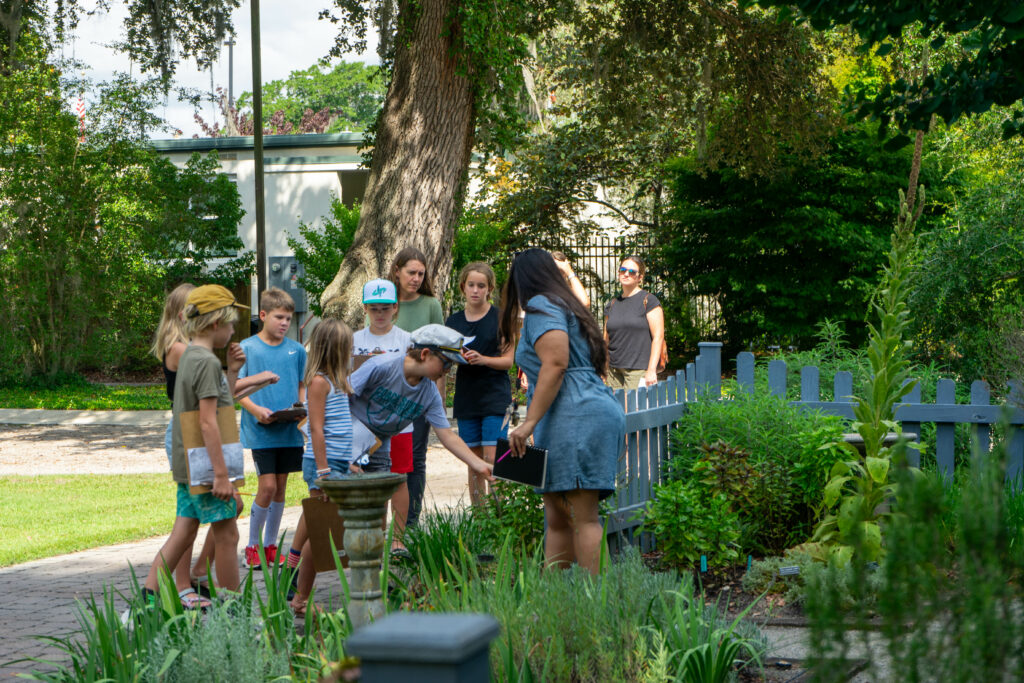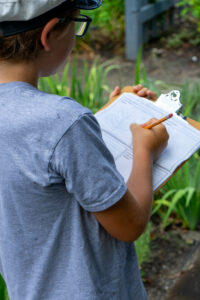A Beginner’s Guide to Field Journaling
go.ncsu.edu/readext?1085077
en Español / em Português
El inglés es el idioma de control de esta página. En la medida en que haya algún conflicto entre la traducción al inglés y la traducción, el inglés prevalece.
Al hacer clic en el enlace de traducción se activa un servicio de traducción gratuito para convertir la página al español. Al igual que con cualquier traducción por Internet, la conversión no es sensible al contexto y puede que no traduzca el texto en su significado original. NC State Extension no garantiza la exactitud del texto traducido. Por favor, tenga en cuenta que algunas aplicaciones y/o servicios pueden no funcionar como se espera cuando se traducen.
Português
Inglês é o idioma de controle desta página. Na medida que haja algum conflito entre o texto original em Inglês e a tradução, o Inglês prevalece.
Ao clicar no link de tradução, um serviço gratuito de tradução será ativado para converter a página para o Português. Como em qualquer tradução pela internet, a conversão não é sensivel ao contexto e pode não ocorrer a tradução para o significado orginal. O serviço de Extensão da Carolina do Norte (NC State Extension) não garante a exatidão do texto traduzido. Por favor, observe que algumas funções ou serviços podem não funcionar como esperado após a tradução.
English
English is the controlling language of this page. To the extent there is any conflict between the English text and the translation, English controls.
Clicking on the translation link activates a free translation service to convert the page to Spanish. As with any Internet translation, the conversion is not context-sensitive and may not translate the text to its original meaning. NC State Extension does not guarantee the accuracy of the translated text. Please note that some applications and/or services may not function as expected when translated.
Collapse ▲Biologists have always had a natural itch for classifying and organizing life on Earth. Carl Linnaeus, the father of taxonomy, created binomial nomenclature during the 18th century. Linnaeus was so passionate about his Latin based classification system that he gave himself the binomial of Carolus Linnæus. While centuries old regulations for binomial nomenclature may exist, there are no rigid rules for field journaling. Creating a field journal is an intentional way to get outside and admire flora and fauna using descriptions, sketches, or even photographs.
If you wish to delve into this practice, you can start by selecting a surface for your observations; this could be a blank or lined notebook, a collection of index cards, or a tablet if you’d like to have a digital journal. To start your first entry, you may want to record the date, time, and location in addition to a description of the day’s weather. This information can help you identify patterns in your observations and species’ habits and behavior.

After you’ve chosen your first subject, may it be a plant or an animal, attempt a quick sketch. You don’t have to be an artist to connect with nature through field journaling, but creating a visual of your subject makes the process a bit easier. Consider the specimen’s features and identifiable properties as if you have never seen it before and you hope to share its likeness with the world. If you are examining a sunflower for instance, you could make a record of its exterior ray flowers and interior disc flowers. These are distinct characteristics of asters that, if recorded, would make your entry more robust. In the event that you are not familiar with the technical terminology associated with your specimen, record what you can using the terms you do know and return to your entry later on after doing a bit of research. If you are using monochrome media, like an ink pen or a pencil, taking note of the specimen’s coloration can also enhance your entry and help with species identification.
 Putting these techniques into practice, our latest Extension Explorers session invited students to join me in field journaling by documenting the nature around the New Hanover County Arboretum. After reviewing the basics of field journaling, we made our first observations in the herb garden; recording the leaf arrangements, aromatic compounds, and some of the historical uses of each plant. Some parents joined in on the process, helping students identify their herb of choice and sharing how they incorporate it into their dishes at home. By the end of our session, students had not only learned to observe nature more closely, but were given a glimpse of how interconnected humans are with the plants that surround us everyday.
Putting these techniques into practice, our latest Extension Explorers session invited students to join me in field journaling by documenting the nature around the New Hanover County Arboretum. After reviewing the basics of field journaling, we made our first observations in the herb garden; recording the leaf arrangements, aromatic compounds, and some of the historical uses of each plant. Some parents joined in on the process, helping students identify their herb of choice and sharing how they incorporate it into their dishes at home. By the end of our session, students had not only learned to observe nature more closely, but were given a glimpse of how interconnected humans are with the plants that surround us everyday.




